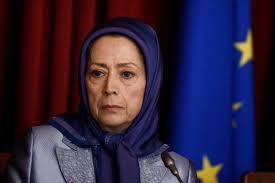Introduction
Just hours after a fragile ceasefire was declared between Israel and Iran following 12 days of intense missile exchanges, Maryam Rajavi, leader of the Paris-based National Council of Resistance of Iran (NCRI), called on Iranians to take matters into their own hands and bring down Supreme Leader Ali Khamenei’s regime.
The ceasefire, brokered by US President Donald Trump, has temporarily halted escalating military strikes, but opposition voices within the Iranian diaspora are urging a more permanent solution: regime change.
Maryam Rajavi: “The People Must Decide Iran’s Fate”
In a statement released on June 24, 2025, following the ceasefire announcement, Maryam Rajavi stated:
“The proposal for a ceasefire and ending the war is a step forward for the third option: neither war nor appeasement. Let the people of Iran themselves, in the battle of destiny, bring down Khamenei and the dictatorship.”
Rajavi reaffirmed the NCRI’s vision for Iran’s future:
- A democratic, non-nuclear republic
- Separation of religion and state
- Gender equality
- Autonomy for Iran’s diverse nationalities
Her comments come just one day after Reza Pahlavi, the exiled son of Iran’s deposed Shah, also called on Iranian security forces to abandon their loyalty to the current leadership.
NCRI’s Complicated History with Iran
The National Council of Resistance of Iran (NCRI), also known by its Persian name Mujahideen-e-Khalq (MEK), has a long and controversial history. The group initially supported the 1979 Islamic Revolution but broke with Iran’s clerical leadership during the 1980s and fought against the Islamic Republic during the Iran-Iraq war.
Although once listed as a terrorist organization by both the United States and the European Union (until 2012), the NCRI has continued its opposition activities from exile. While critics question its internal support base within Iran, it remains one of the most organized dissident groups capable of mobilizing opposition to the regime.
Rajavi emphasized:
“The people of Iran, in their century-long struggle, at tremendous and bloody cost, have repeatedly rejected the dictatorships of the Shah and Sheikh through successive uprisings.”
NCRI’s Role During Recent Unrest
During previous anti-government protests in Iran, the NCRI has played a significant role in documenting protests through its social media networks and underground contacts inside Iran. The group claims it has provided vital information to international organizations and media regarding the Iranian government’s brutal crackdown on dissent.
Iranian authorities, however, regularly accuse the NCRI of fomenting unrest and several of its activists have been executed over the past year.
In 2002, the NCRI was the first to publicly reveal the existence of Iran’s uranium enrichment program, sparking the international crisis over Iran’s nuclear ambitions that continues to this day.
International Reactions to Calls for Regime Change
After US airstrikes targeted Iranian nuclear facilities on June 22, 2025, President Trump briefly suggested that toppling Iran’s hardline leadership might be an ultimate goal. However, his administration has since clarified that the primary objective remains the destruction of Iran’s nuclear capabilities, not regime change.
Yet, many international observers recognize that opposition voices like Rajavi’s highlight the internal instability Tehran faces, particularly as economic sanctions, ongoing unrest, and military pressures continue to strain the government’s control.
Internal Fragmentation of Iran’s Opposition
One of the key challenges to any realistic regime change scenario is the fragmentation of Iran’s opposition. While both the NCRI and Reza Pahlavi call for an end to clerical rule, they represent distinct visions for Iran’s future and command different support bases.
Iran is home to numerous ethnic minorities and political factions. Many analysts believe any uprising would require a broad, united movement to challenge the Islamic Republic’s powerful Revolutionary Guard and security apparatus.
According to political experts familiar with Iran, the potential for such a united movement remains uncertain. While many Iranians express dissatisfaction with the current regime, fear of state violence and the lack of a universally accepted leadership alternative complicate the prospects for coordinated mass resistance.
Fragile Ceasefire Overshadowed by Internal Strife
As Israel and Iran observe a tenuous ceasefire brokered by President Trump, dissident movements like the NCRI are seizing the opportunity to push their agendas forward. However, as tensions simmer, the possibility of renewed hostilities remains high.
Following Rajavi’s statement, Israeli Defence Minister Israel Katz warned that Israeli forces remain ready to strike Tehran if the ceasefire is violated.
Meanwhile, international observers continue to monitor whether the ceasefire will hold and whether calls for regime change will gain significant traction within Iran.
Conclusion
As the Iran-Israel conflict of 2025 enters a precarious pause, dissident voices like Maryam Rajavi’s remind the world that Iran’s internal political crisis is far from resolved. Whether her call will resonate inside Iran — and whether a united opposition can emerge — remains one of the most crucial questions facing Iran’s future.


